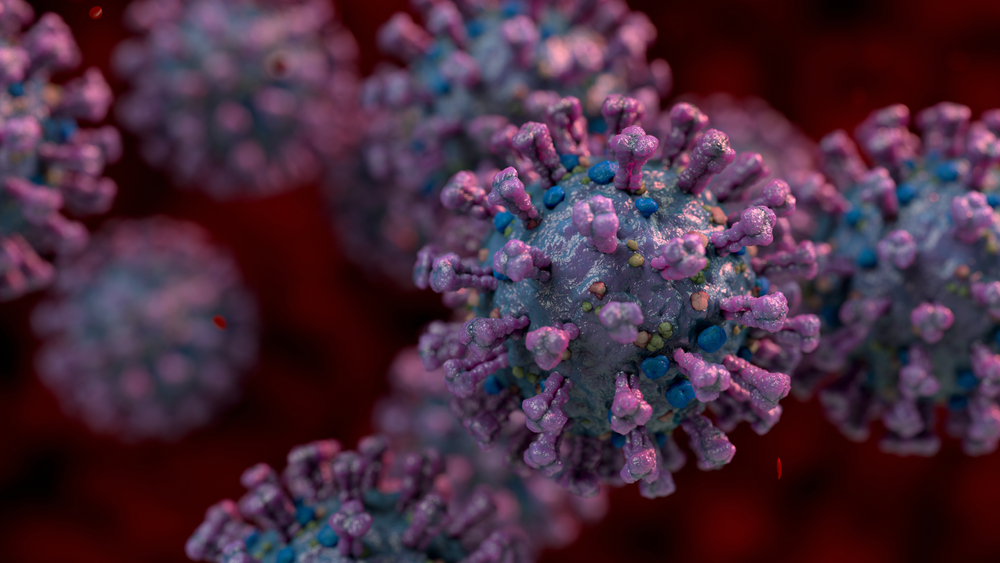Every few months, the COVID-19 virus seems to reinvent itself. Just when we think we’ve got it figured out, a new variant appears—sometimes with surprising symptoms that catch us off guard. Take the NB.1.8.1 variant, for example, which has quietly become one of the most common strains in the United States, now responsible for more than a third of COVID cases. What makes this variant stand out? Many infected describe a throat pain so sharp it’s been nicknamed the “razor blade throat.”
Why does this matter? Because recognizing how symptoms evolve helps you protect yourself and those around you. Are you dealing with a stubborn sore throat that feels worse than a typical cold? Could it be this new variant? Understanding these signs can make all the difference in seeking timely care and preventing further spread.
New COVID Variant NB.1.8.1
The COVID-19 virus continues to evolve, and NB.1.8.1 is one of its latest forms gaining attention. First detected in China early in 2025, this variant is a close relative of the Omicron strain but has developed some changes that help it spread faster and partly evade immunity from vaccines or previous infections.
In the United States, NB.1.8.1 went from almost no cases in March to accounting for about 37% of COVID infections by early June, making it the second most common strain after the LP.8.1 (Omicron) variant. The Centers for Disease Control and Prevention (CDC) and the World Health Organization (WHO) are closely monitoring this variant, but so far, the WHO considers the overall risk to public health as low. Current vaccines remain effective in preventing severe illness from NB.1.8.1.
Experts point out that while this variant is more contagious and can bypass some immune defenses, it has not caused more severe disease than previous versions. That said, its rapid spread means more people could get infected, so understanding how it behaves is essential for managing risk.
Recognizing Symptoms of the New Variant

The symptoms of NB.1.8.1 largely resemble those of earlier COVID-19 variants, but some features stand out. A key symptom that has drawn attention is the severe sore throat described as a “razor blade throat.” People report intense throat pain so sharp it feels like swallowing broken glass, making swallowing, speaking, and even drinking difficult. This symptom is more severe than the typical sore throat linked to previous COVID strains.
Beyond the throat pain, other common symptoms include:
- Jaw, upper back, and area behind the ear pain or stiffness
- Persistent nasal congestion, rather than just a runny nose
- Sudden loss of appetite
- Fatigue and mild headaches
- Fever or chills
- Dry cough
- Muscle aches and general body pain
- Nausea or mild digestive issues such as diarrhea
These symptoms overlap with many respiratory illnesses, including flu and seasonal allergies. However, the intensity of the throat pain and the combination of symptoms like jaw stiffness and persistent congestion are less typical of common colds or allergies.
The CDC continues to list fever, cough, shortness of breath, sore throat, congestion, loss of taste or smell, and fatigue as primary COVID symptoms. If you experience severe or worsening symptoms, particularly trouble breathing or chest pain, seek medical attention immediately.
When to Seek Medical Attention

Most people infected with the NB.1.8.1 variant experience mild to moderate symptoms and can recover at home with rest and hydration. However, it’s important to recognize when symptoms signal a more serious problem that requires prompt medical care.
Seek immediate medical attention if you or a loved one experiences any of the following:
- Difficulty breathing or shortness of breath
- Persistent chest pain or pressure
- New confusion or trouble staying awake
- Lips, face, or nail beds turning pale, gray, or blue
These signs may indicate a severe infection or complications needing urgent treatment.

Certain groups are at higher risk for serious illness from COVID-19 variants like NB.1.8.1. This includes people over 65, those with chronic health conditions such as diabetes, heart or lung disease, individuals with weakened immune systems, pregnant women, and young children. These individuals should be especially cautious and consult a healthcare provider at the first sign of symptoms.
Early testing and diagnosis are key. If you experience symptoms that match COVID-19 or “razor blade throat,” get tested and isolate until you know your status. Timely medical care can reduce risks and help manage symptoms more effectively.
How to Protect Yourself and Others

Despite its increased contagiousness, the NB.1.8.1 variant can still be managed with proven prevention strategies. Current COVID-19 vaccines remain effective at preventing severe illness and hospitalization caused by this variant, so staying up to date with vaccinations is crucial. Here are key steps to reduce your risk and protect those around you:
- Get Vaccinated and Boosted: The latest COVID-19 vaccines, especially those targeting Omicron subvariants, strengthen your immune response against NB.1.8.1. The CDC recommends vaccination for everyone over six months old, with special emphasis on older adults, immunocompromised individuals, and people with chronic conditions.
- Wear Masks in Crowded or Indoor Settings: Masks help block respiratory droplets that carry the virus. Use a well-fitted mask in places with poor ventilation or where social distancing is difficult.
- Practice Good Hand Hygiene: Regularly wash your hands with soap and water for at least 20 seconds or use hand sanitizer when washing isn’t possible.
- Maintain Social Distance: Avoid close contact with people who are sick or if you’re feeling unwell yourself.
- Isolate If You Test Positive: Staying away from others when infected prevents spreading the virus, especially to vulnerable populations.
- Stay Informed About Vaccine Access: Changes in vaccine recommendations and availability may affect who can get boosters. Check local health authorities for the latest guidance and resources.
Practical Tips for Managing Symptoms at Home

If you contract the NB.1.8.1 variant and your symptoms are mild to moderate, most cases can be managed safely at home. Here’s how to take care of yourself and support recovery:
- Rest and Hydrate: Give your body the time it needs to fight the virus. Drink plenty of fluids like water, herbal teas, or broths to stay hydrated.
- Relieve Throat Pain: For the “razor blade throat” symptom, warm saltwater gargles or throat lozenges can provide relief. Avoid irritants like smoking or very cold drinks.
- Manage Fever and Pain: Over-the-counter medications such as acetaminophen or ibuprofen can help reduce fever, headaches, and body aches. Follow dosage instructions carefully.
- Monitor Your Symptoms: Keep track of your temperature, breathing, and oxygen levels if you have a pulse oximeter. Seek medical attention if oxygen saturation drops below 94% or symptoms worsen.
- Use Steam Inhalation: Steam inhalation may ease nasal congestion and throat irritation. Use caution and avoid burns.
- Isolate to Protect Others: Stay in a separate room and use a mask when around others to prevent spreading the virus.
- Reach Out for Help: If symptoms worsen or you belong to a high-risk group, contact your healthcare provider early for guidance.
Staying One Step Ahead
The emergence of the NB.1.8.1 COVID variant reminds us that the virus is still evolving. While current vaccines remain effective at preventing severe illness, this variant’s ability to spread quickly and cause intense symptoms like the “razor blade throat” means staying vigilant is essential.
Recognize the signs early. If you experience severe throat pain, persistent congestion, or other COVID-like symptoms, get tested and isolate to protect those around you. Don’t ignore warning signs such as difficulty breathing or chest pain—seek medical care promptly.
Vaccination remains the most reliable defense. Keep your COVID vaccines and boosters up to date, especially if you are older or have underlying health conditions. Continue practicing proven preventive measures like masking in crowded settings and maintaining good hand hygiene.
COVID-19 will likely remain part of our lives for the foreseeable future. Staying informed, acting quickly when symptoms appear, and protecting yourself and others can reduce the impact of new variants and keep communities safer.
Take control of your health: get vaccinated, stay alert to symptoms, and follow public health guidance. Together, we can navigate this evolving challenge with confidence and care.














Leave a Reply